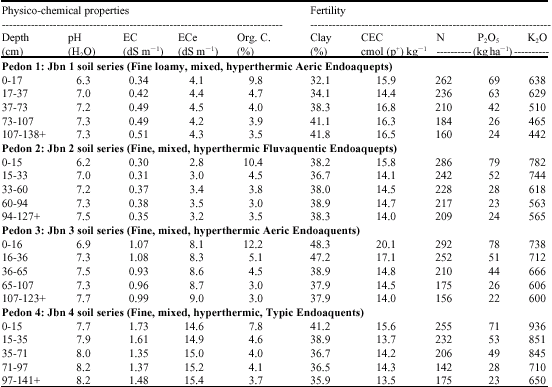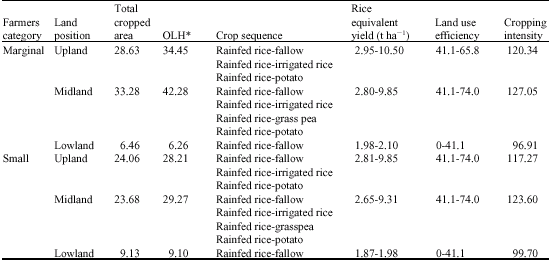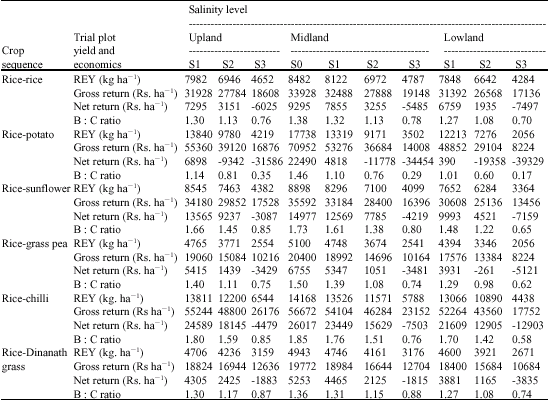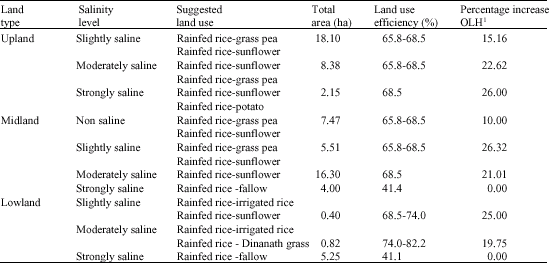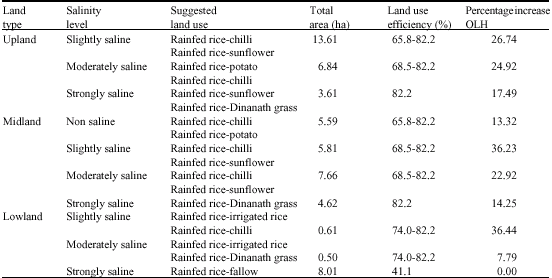Research Article
Appraisal of Natural Resource Database for Alternate Agricultural Land Use at Village Level Under Saline Environment-A Case Study from Sagar Island, India
National Bureau of Soil Survey and Land Use Planning, Kolkata, 700091 West Bengal, India
R. Bera
National Bureau of Soil Survey and Land Use Planning, Kolkata, 700091 West Bengal, India
K.D. Sah
National Bureau of Soil Survey and Land Use Planning, Kolkata, 700091 West Bengal, India
D. Sarkar
National Bureau of Soil Survey and Land Use Planning, Kolkata, 700091 West Bengal, India
A.K. Chatterjee
Department of Soil Science, Visva Bharati University, Santiniketan, 731236 West Bengal, India
P. Bhattacharyya
BK21 Advanced Geo-Environment Research Team, School of Civil and Environmental Engineering, Kunsan National University, Kunsan, 573-701, Jeonbuk, Korea
K. Kim
BK21 Advanced Geo-Environment Research Team, School of Civil and Environmental Engineering, Kunsan National University, Kunsan, 573-701, Jeonbuk, Korea
S.H. Kim
BK21 Advanced Geo-Environment Research Team, School of Civil and Environmental Engineering, Kunsan National University, Kunsan, 573-701, Jeonbuk, Korea









